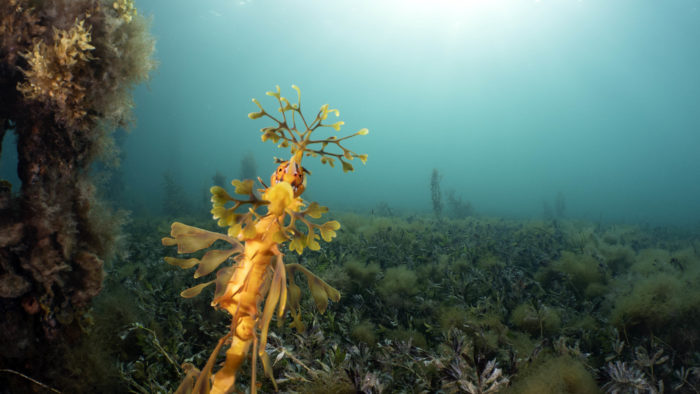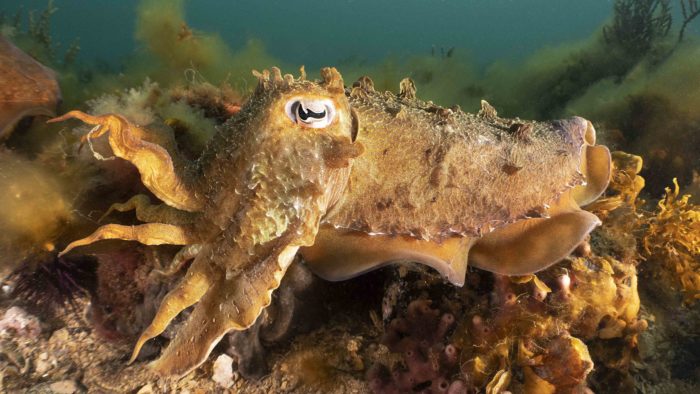
I’ve always had a soft spot for the cold temperate waters of Southern Australia. Especially as I grew up, learnt to dive, spent most of my free time and was lucky enough to conduct my research in Tasmanian waters. Past Australasian Scholar Stefan Andrews invited me to help him work on a new project which is being supported by National Geographic that aims to document and film the “Great Southern Reef“, also known as Australia’s temperate reefs.
This reef spans approximately 71 000 square kilometres, from the southern half of Western Australia all the way around to the New South Wales/Queensland border and of course, includes Tasmania. This stretch of reef has never really been given the same publicity when compared to the tropical reefs of north-eastern Australia the Great Barrier Reef. But this stretch of southern temperate reefs is where more than 70% of Australian’s reside and brings up to $10-billion per annum to the country in fishing and tourism activities. Most importantly, these reefs are facing just as many threats through anthropogenic and climate-induced change as the tropical reefs are.
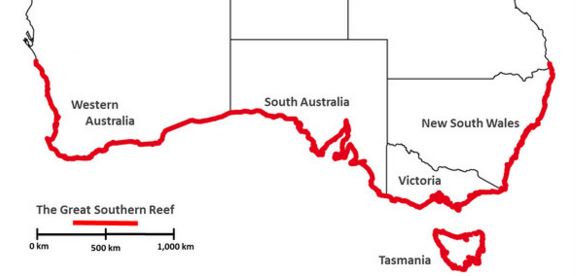
I couldn’t have jumped faster at the opportunity to help document the importance of this extent of Australia’s reef system. Particularly as one of my goals for the scholarship year was to learn more about how we can communicate the latest science that is happening and the threats these reefs face, to the general public to broaden their understanding of the underwater world. This journey started in Stefan’s home state of South Australia. This part of Australia’s reef system is extremely unique – with up to 85% of the marine flora and fauna found nowhere else in the world!
We made our way around from Adelaide to Whyalla in the Upper Spencer Gulf, to document and show the local community the Australian Giant Cuttlefish annual migration event by joining the non-for-profit organisation Experiencing Marine Sanctuaries for Cuttlefest 2018!
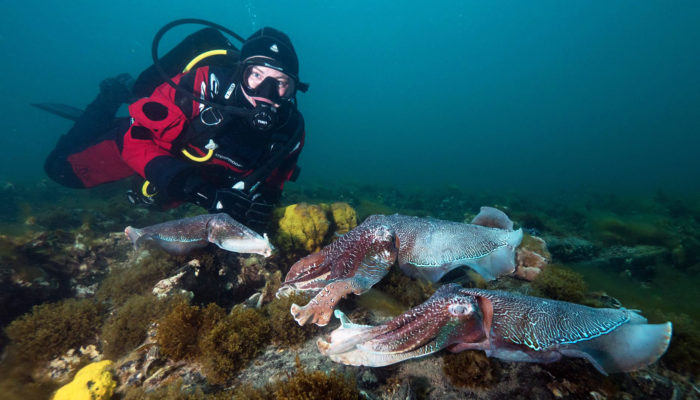
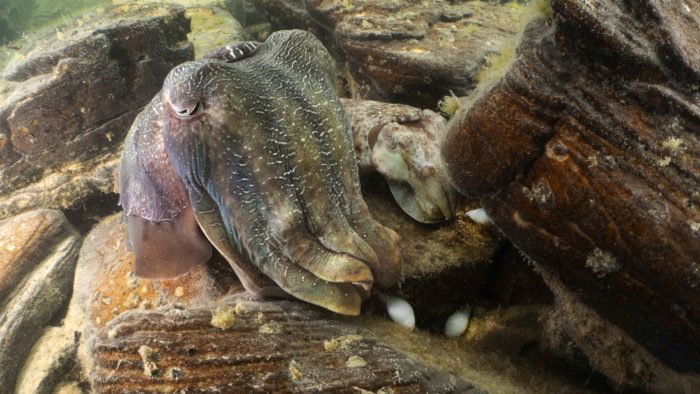
The week comprised of working alongside an amazing group of dedicated volunteers, where we split into groups and were guiding members of the community and school children between Black Point and Stony Point, to give them the opportunity to witness the cuttlefish migration and mating event first hand. It also gave Stefan and I a fantastic opportunity to film the community’s reaction, particularly people who were snorkelling and witnessing cuttlefish for the first time.
I also got the opportunity to work alongside Stefan and Dominik Fretz, who make up part of the Ocean Imaging team. They were able to use an ROV to live-stream to over 83 000 of their Facebook viewers the cuttlefish mating event taking place at Whyalla, right then and right there! It was fascinating to learn about different platforms that can be used to communicate (live) important natural events which are happening right under the surface. Particularly as the majority of the general public would have absolutely no idea that over 130 000 Australian Giant Cuttlefish migrate to only an 8km stretch of coastline in the Upper Spencer Gulf each year to make the next generation of cuttlefish. Plus I got to drive the ROV!
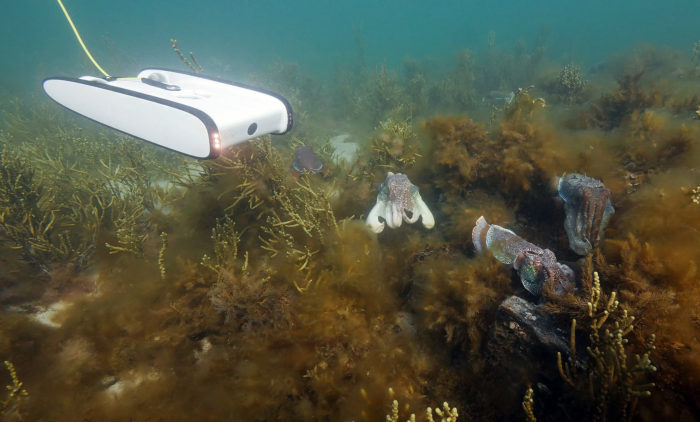
I was also very lucky as I got to learn how to conduct interviews, the types of questions to ask to be able to tell the best story possible and filming techniques. This included helping Stefan interview local scientist and Natural Resources Eyre Peninsula Marine Parks Coordinator Dr Shelley Paull, who works tirelessly to connect the community with the marine environment, as well as recognise and work alongside Barngarla Aboriginal people. During the Cuttlefest week, Shelley was able to share with the school children some local Aboriginal Barngarla language such as Ocean “Wardna” and Cuttlefish “Yayardloo”.
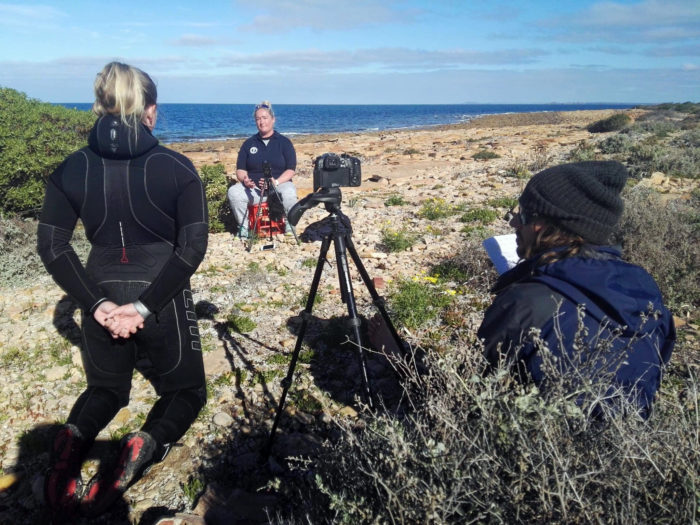
The community, as well as the volunteers, were invited to “Curious Cuttles”, with leading researchers and guest speakers including Dr Zoë Doubleday and Professor Stephen Donnellan, both experts in Cephalopods. Their talks focused primarily on Australian Giant Cuttlefish, but everything from how they mate, why they change colour, how their eyes work, and how they can change the texture of their bodies to camouflage into their surroundings. They also spoke about other related Cephalopods such as squid and octopus.
The highlight of the week for me had to be the reaction of people we were taking out snorkelling for the first time – there was such amazement and admiration for these animals and these people certainly left inspired. As Dr Shelley Paull reiterated, you can’t protect what you don’t know. By opening up the underwater world to the local community, their admiration for the underwater world grew exponentially and it allows them to see first-hand why it is so important to protect. I feel extremely lucky to be able to give others this opportunity.
This fantastic short video by Stefan Andrews summarises my experience of Cuttlefest 2018 and working with the Experiencing Marine Sanctuaries Team:
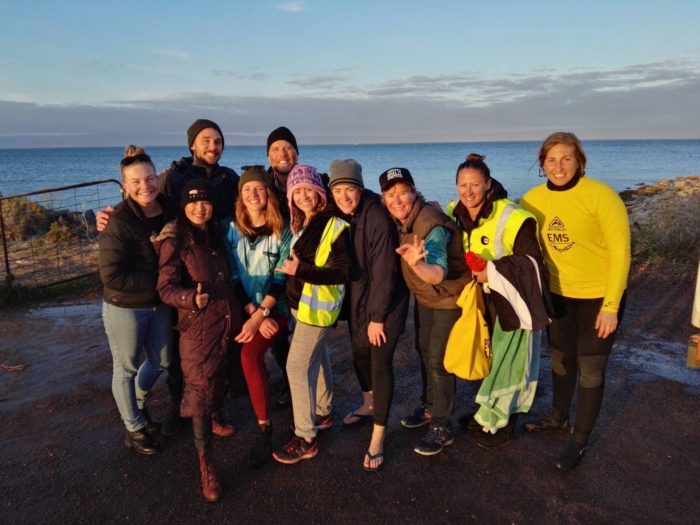
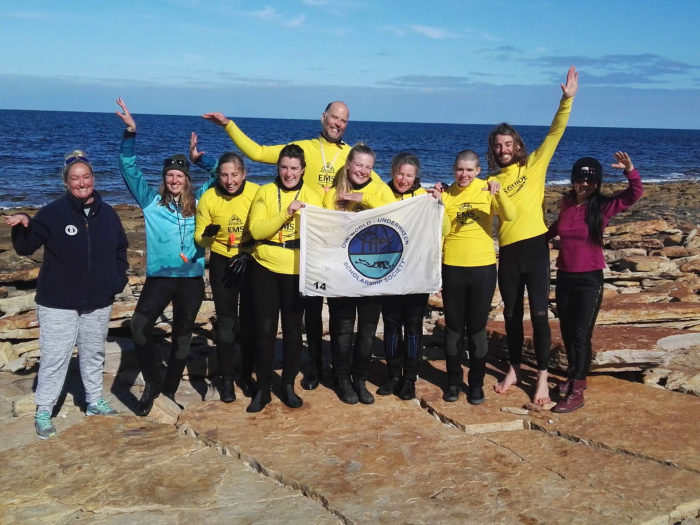
To finish off this fantastic experience in South Australia, Stefan took me to see one of Australia’s most iconic temperate animals, the elusive Leafy Seadragon! I was so lucky to see two of these magnificent animals during a dive at Wool Bay on the Yorke Peninsula. This time in South Australia has allowed me to witness firsthand another incredible part of the Great Southern Reef.
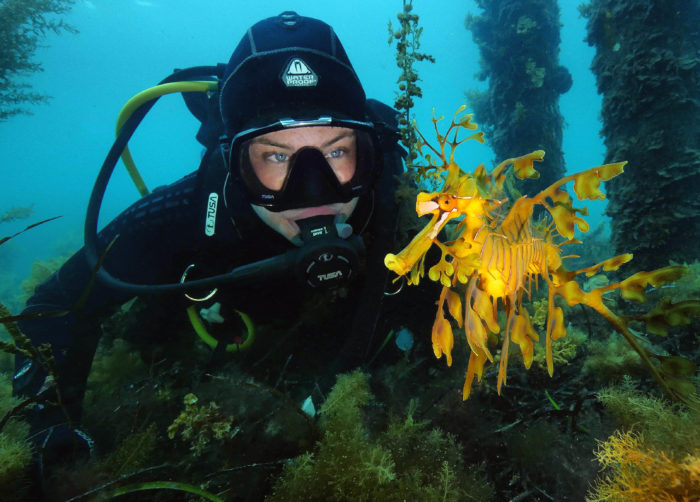
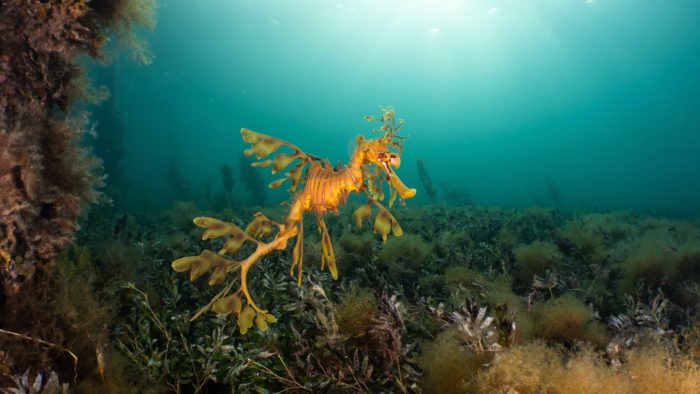
There is a number of people I would sincerely like to thank for making this such a wonderful experience. A big thank you to Stefan for hosting me and inviting me to assist with this extremely interesting project that I am so passionate about. Thank you to everyone involved in making Cuttlefest 2018 such a successful event – to all the volunteers, but particularly Carl Charter and Emma Daly for making each day run so smoothly with all involved and Haixia Wen for such delicious food!
A huge thank you to Karen and Phil Andrews for hosting me at their place on the Yorke Peninsula while we dived in this wonderful part of the world. Last but not least, thank you to all those who support these opportunities for me, including OWUSS, Rolex, TUSA, Waterproof International, DAN, PADI, Mako Eyewear, Reef Photo & Video and Nauticam.
Next, I am off to Coral Bay in Western Australia to undertake a photography course with Australian underwater photographer Alex Kydd on the beautiful Ningaloo Reef. Until next time, I leave you with this facebomb!
